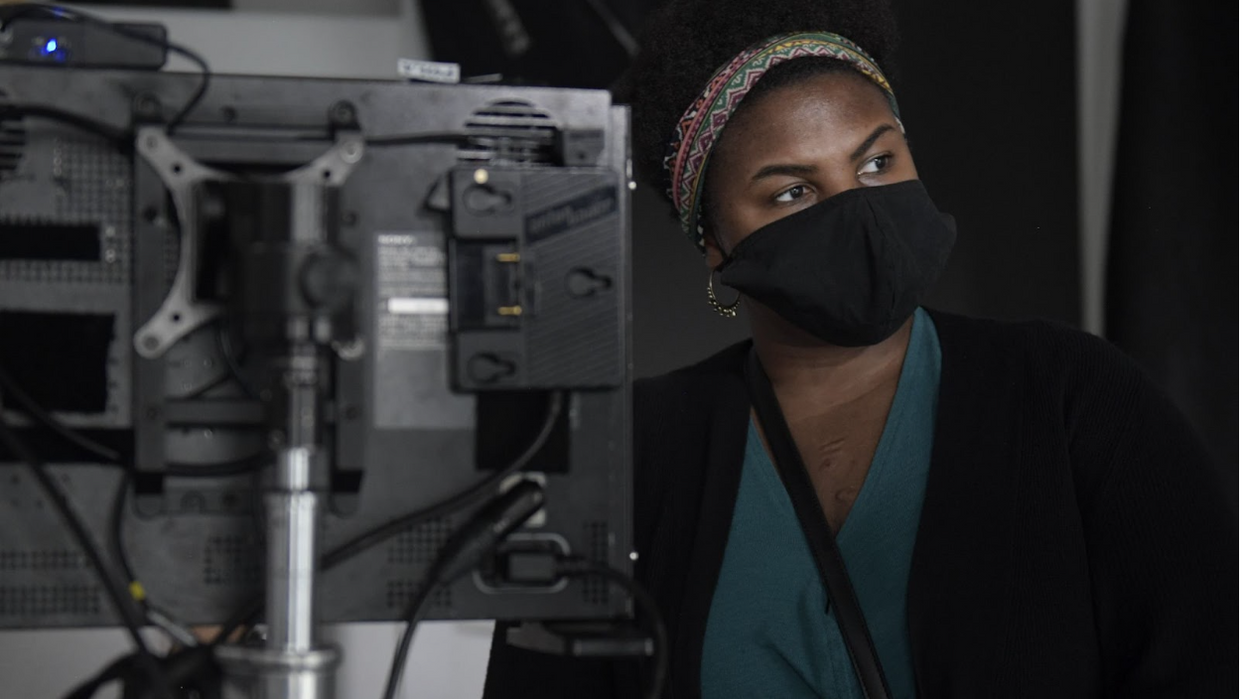How a Professional Colorist Made This Short Film
Writer/director/colorist Patrice D. Bowman discusses how she utilized her colorist background to direct the experimental short drama Under the Sun After the Wind.

BTS from 'Under the Sun After the Wind'
This post was written by Patrice D. Bowman.
In 2021, I directed my award-winning short film Under the Sun After the Wind. In summary, an isolated Black woman, Daniela, struggles physically and mentally against the news of COVID-19 and police brutality she sees online, and, which soon, projected onto her.
Like many directors in 2021, I made my film under unprecedented restrictions. But I relied on my experience as a colorist to make this film. In this article, I will discuss how I tapped into my colorist background to find great collaborators and to help tell my film visually.
Through my production and post-production company Bowman Pictures, I have interacted with a lot of directors, way more than if I were only a writer/director. My client base came in handy when I began production for Under the Sun After the Wind. Due to my positive working relationships with other (multi-hyphenate) directors, I was able to get some free or reduced-fee services from them, including:
- Previsualization
- Casting
- Animation
For the previsualization for my film, I worked with a director to film test footage. I also took time to source and edit the clips I wanted to use for projection during the test shoot.
With the resulting previsualization video, along with a standard lookbook, I showed the director of photography and other department heads what I wanted to achieve. All of this planning reduced the amount of mistakes that otherwise would have left me scrambling to “fix it in post.”

I want to emphasize that, as an independent director, you should offer (or have already provided) something valuable to people before you ask for free or reduced-fee work.
So far, I’ve talked about how my colorist background helped me find valuable collaborators. Now, I will discuss how my colorist background affected my visualization of the film.

To reflect Daniela’s isolation, the film takes place in a starkly lit, white cyclorama. The videos that we projected added intense color and/or contrast (especially the black-and-white clips). On top of that, red lights accompanied the more emotionally tense moments.
I didn’t want subtlety. I wanted heightened visuals to match the protagonist’s inner turmoil. We used an ARRI ALEXA Mini and film in ARRI Log-C, 10-bit, Apple ProRes 4444 (ARRIRAW, while great, was unnecessary for my controlled, interior film shoot). This provided enough flexibility in color grading. In some shots, I pushed the darkness, contrast, and saturation, and the image didn’t break apart (meaning no noise, banding, etc.). I learned this kind of critical information as a colorist.

I hope that this article serves as a lesson for post-production professionals. If you want to be a director, there is real power in utilizing connections and skills from your post background!

This post was written by Patrice D. Bowman.
Patrice D. Bowman is an award-winning filmmaker and colorist. She is the owner of the production and post-production company Bowman Pictures.











